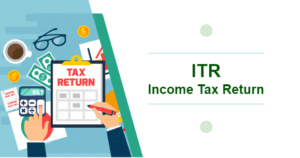
ITR filing of individual

ITR filing of individual: To file your Income Tax Return (ITR) as an individual, you can follow these steps:
Gather your documents:
Collect all the necessary documents, including your PAN (Permanent Account Number), Aadhaar card, bank statements, Form 16 (if applicable), investment statements, and other relevant financial documents.
Determine the applicable ITR form:
Confirm the appropriate ITR form based on your income sources and other applicable criteria. The different ITR forms for individuals are ITR-1, ITR-2, ITR-3, ITR-4, ITR-5, ITR-6, and ITR-7. Ensure that you meet the eligibility requirements for filing the selected ITR form.
Prepare the ITR form:
Open the selected ITR form and fill in the required details. Provide your personal information such as name, address, PAN, Aadhaar number (if applicable), and contact details.
Enter your income details:
Enter your income details from various sources such as salary, house property, capital gains, business or profession, and other applicable income sources. Fill in the information related to your income, deductions, exemptions, and tax payments.
Compute the taxable income:
Calculate your taxable income by deducting eligible deductions and exemptions from your total income. ITR filing of individual
Pay any additional tax (if applicable):
If there is any additional tax liability after considering your tax deductions and advance tax payments, pay the remaining tax before filing your ITR. You can pay the tax online through the Income Tax Department’s e-payment portal.
For more information visit this site: https://www.incometax.gov.in
Fill in the details of tax payments:
Provide the details of your tax payments, including TDS (Tax Deducted at Source) from your salary or other income, advance tax payments, and self-assessment tax payments.
Validate the form:
Validate the form to ensure that all mandatory fields are filled correctly, and all the required schedules and calculations are completed accurately.
Generate the XML file:
Once the form is validated, save the completed ITR form as an XML file.
Submit the return online:
Visit the Income Tax Department’s e-filing portal (https://www.incometaxindiaefiling.gov.in/) and log in to your account. Select the relevant assessment year and the suitable ITR form accordingly. Upload the saved XML file and follow the instructions to submit the return.
Verify the ITR:
After successfully submitting the return, it is important to verify it. You can verify the ITR electronically using methods such as Aadhaar OTP, EVC (Electronic Verification Code), or by sending a signed physical copy of ITR-V to the Centralized Processing Center (CPC).
Note: It is advisable to consult a tax professional or a qualified Chartered Accountant for assistance in filing your ITR, especially if you have complex tax situations or require specific guidance. ITR filing of individual
Remember to keep a copy of the filed ITR and all supporting documents for your records. ITR filing of individual
FAQs
1. Who is required to file an ITR?
- Any individual whose annual income exceeds the basic exemption limit (₹2.5 lakh for individuals below 60 years) must file an ITR.
2. Which ITR form should I file?
- The appropriate ITR form depends on your income source:
- ITR-1 (Sahaj) for salaried individuals and those with one house property and interest income.
- ITR-2 for those with capital gains, foreign income, or multiple house properties.
3. When is the ITR filing deadline?
- The deadline is typically July 31st for individuals (unless extended by the government).
4. How can I file my ITR?
- You can file your ITR online through the Income Tax Department’s e-filing portal (https://www.incometax.gov.in/) or by hiring a tax professional.
5. What documents are required for ITR filing?
- Basic documents include:
- PAN card
- Form 16 (from employer)
- Bank statements
- Investment proof for deductions
- TDS certificates
6. What happens if I don’t file my ITR on time?
- You may face a late filing fee (up to ₹10,000), interest on tax dues, or lose eligibility to carry forward losses.
7. Can I claim deductions while filing my ITR?
- Yes, deductions under Section 80C (e.g., insurance premiums, PPF) and other sections help reduce your taxable income.
8. How can I check my ITR status after filing?
- After e-filing, you can check the status through the Income Tax e-filing portal by logging in with your PAN and password.
9. Can I revise my ITR after submission?
- Yes, you can file a revised return if you discover any errors after submission, as long as it’s done before the end of the assessment year.